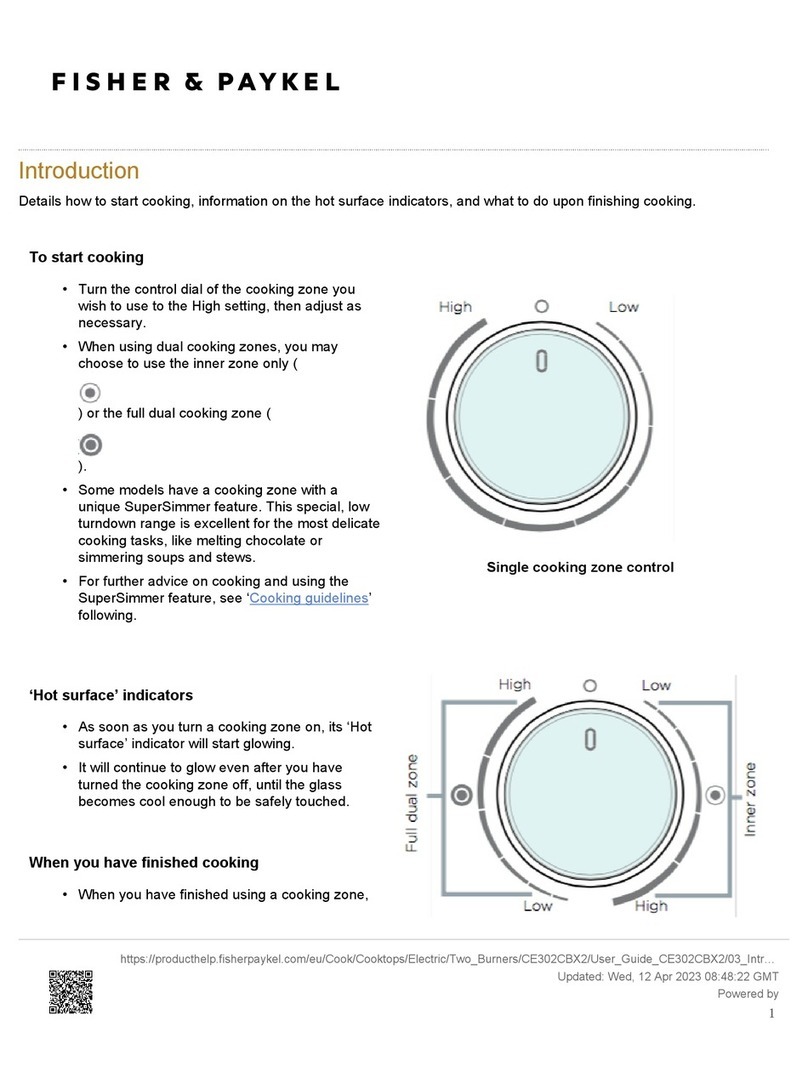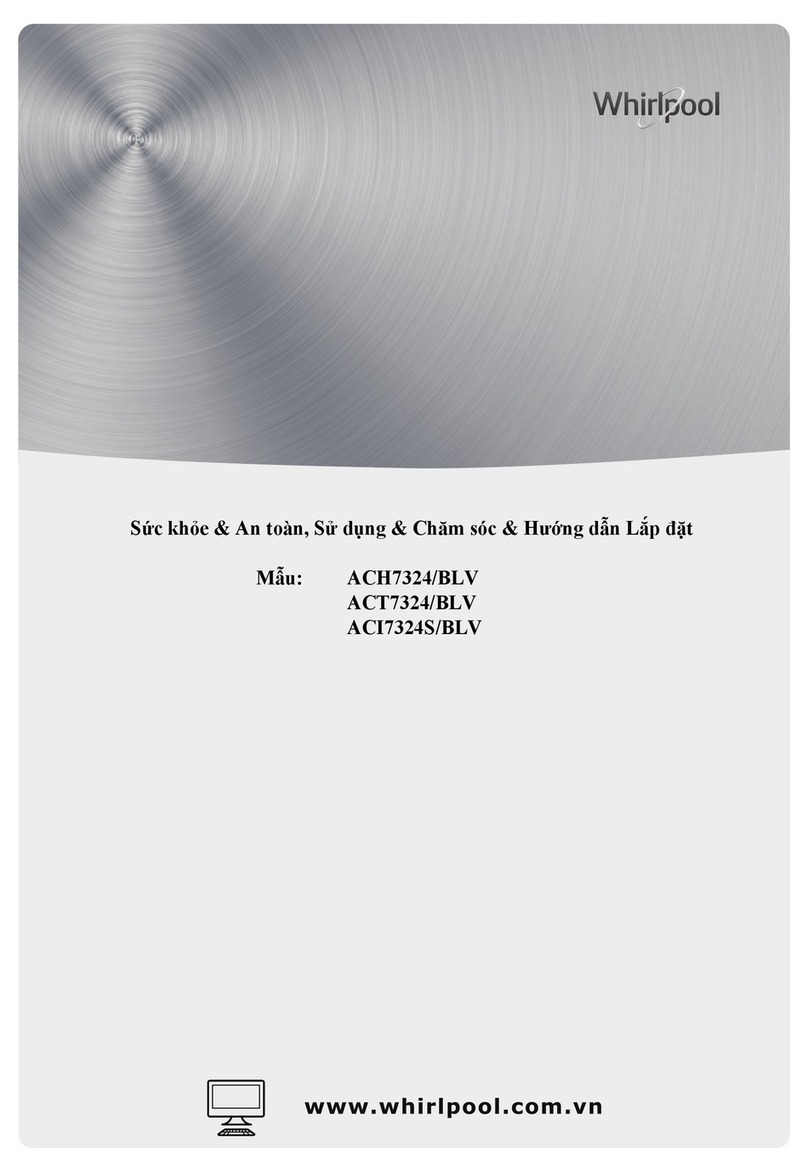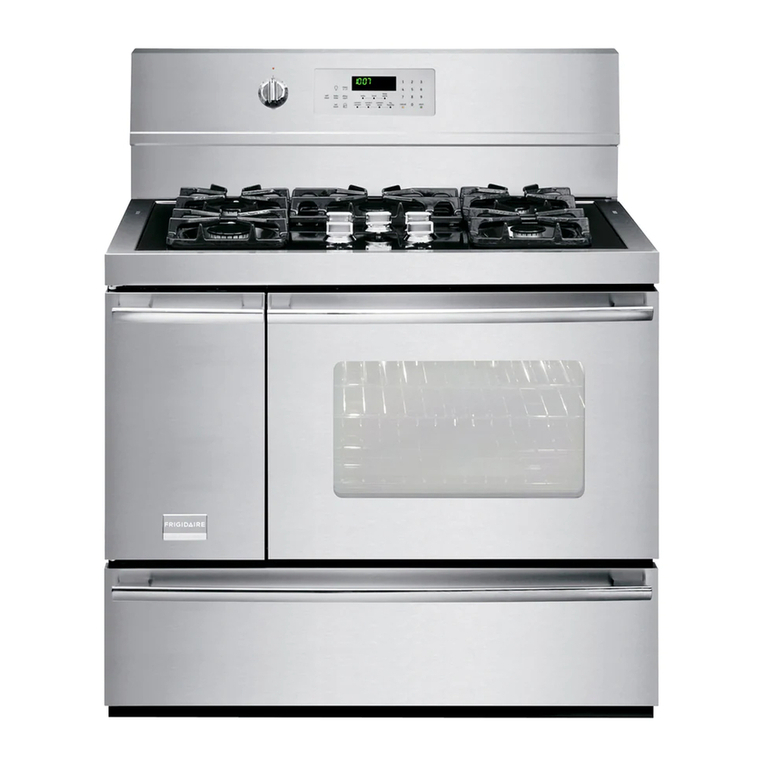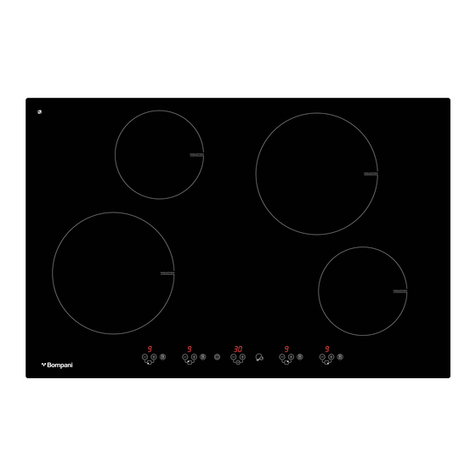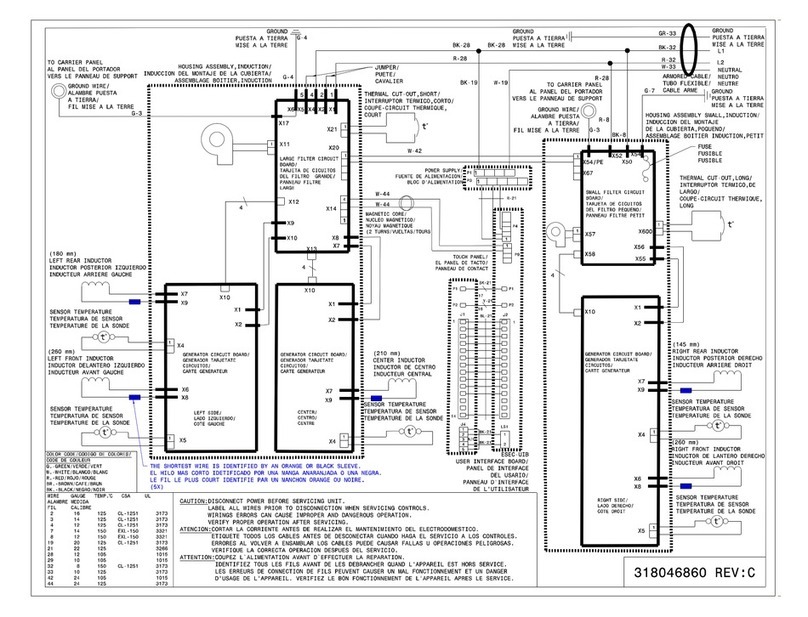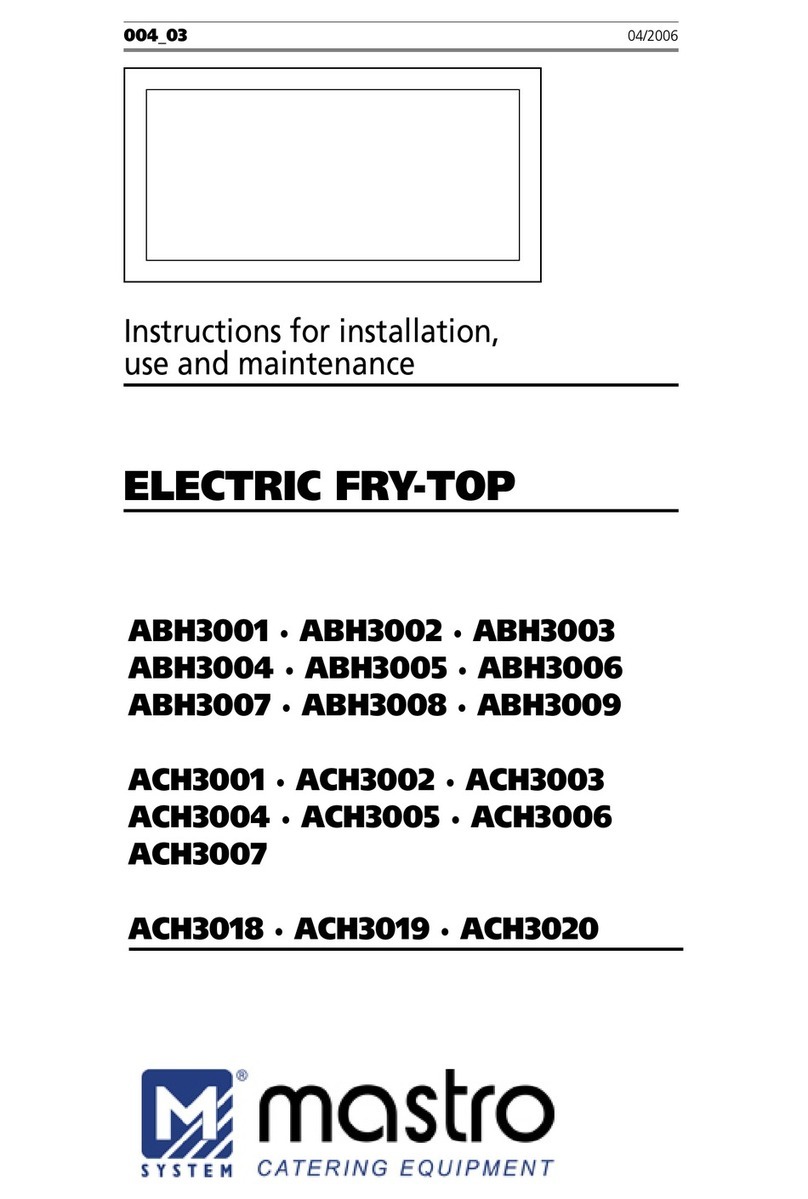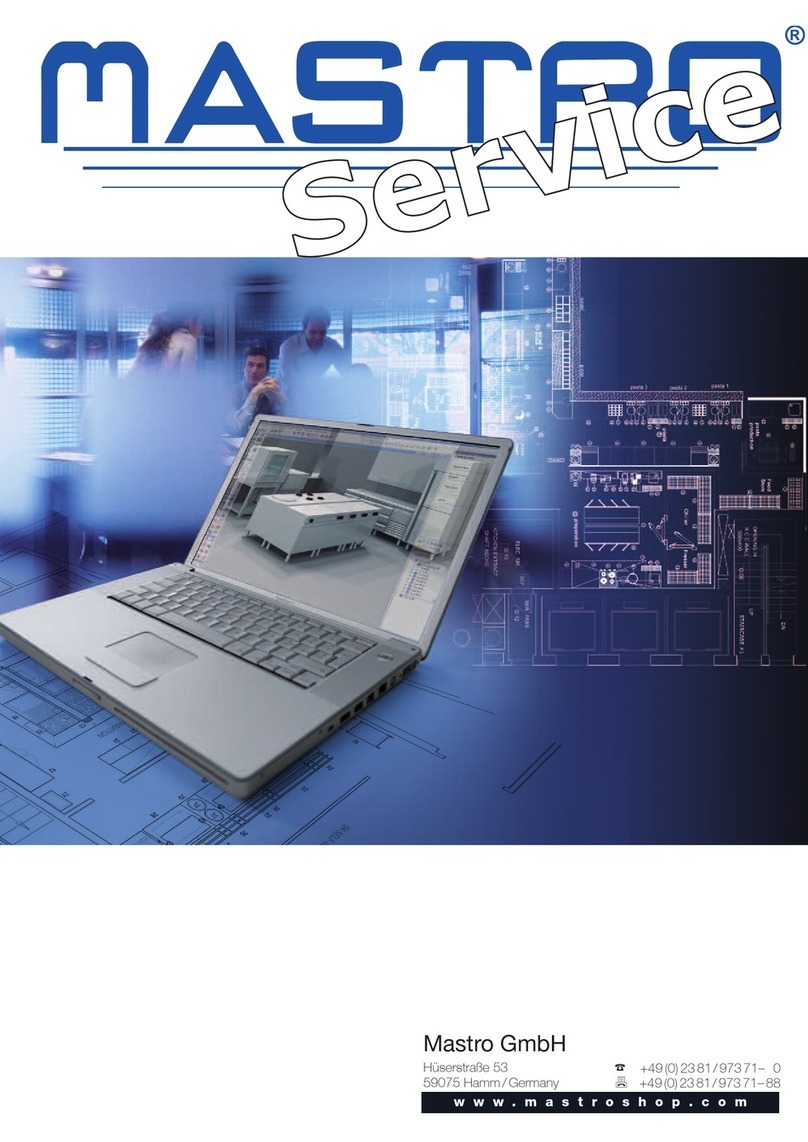
7.1 CONVERSION FOR USE WITH A DIFFERENT TYPE OF GAS – FRY TOP
The appliance is tested and set for working with gas according to the characteristics table
affixed in proximity to the appliance’s gas inlet.
In order for it to function with a different type of gas, proceed as follows:
•
The conversion must be carried out by qualified personnel
•The set of nozzles for changeover to another type of gas, different from the type for
which the unit was set up, is normally contained in a nylon bag with relative additional
labels that show all the types of gas.
If the set is not provided, it must be requested from the dealer/importer, first ascertaining
that the unit can in fact work with other types of gas.
Once changeover and necessary adjustments are complete, the label for the
corresponding gas must be place in the appropriate place on the characteristics tag,
cutting out the correct one.
•Changing the burner nozzle (Fig. 1):
remove the panel (12). Open the burner’s air regulating bush completely (24) and change
the nozzle (27), if necessary unscrew the gas connection pipe fitting (13), unscrew the
nozzle holder (17) and change the nozzle (27). Put everything back in place; place the
burner air regulating bush (24) at the distance specified ("A") in the Technical Data table
according to the type of gas (Fig. 3).
•Changing the pilot nozzle (23):
remove the panel (12), unscrew the small pilot connecting pipe (16), change the nozzle,
inserting it and the small pilot connecting pipe in the nozzle holder together.
Check there are no gas leaks by using a soapy water solution.
•Regulating the minimum flame:
remove the cock knob (8), use a screwdriver to turn the cock (6) adjustment screw (7)
until you get the minimum flame required.
•Adjustment of minimum (Fig.2): (machines set up to use LPG and changed over to
natural gas)
Remove the knob (8) from the cock and use a screwdriver on the adjustment screw (7)
to tighten it all the way down.
•Supply pressure:
it must be that specified on the appliance’s data plate and in the instruction handbook
(see the Technical Data table). Check the supply pressure by inserting a rubber pipe,
with a water gauge or similar, in the pressure tap (10) welded on the gas shaft (9)
removing the screw (11). After it has been checked, tighten the screw. If the supply
pressure is different to that specified, find the cause and correct it.
